We occasionally link to goods offered by vendors to help the reader find relevant products. Some of these may be affiliate based, meaning we earn small commissions (at no additional cost to you) if items are purchased. Here is more about what we do.
Basic Tea Varieties and Notable Subtypes
As a habitual coffee drinker myself, I sometimes forget about how much I love tea. Then, I’ll get a wild hair and fix myself a cup of Lady Grey (my personal tea of choice). I’ll remember just how delicious tea can be and wonder why I don’t drink it more.
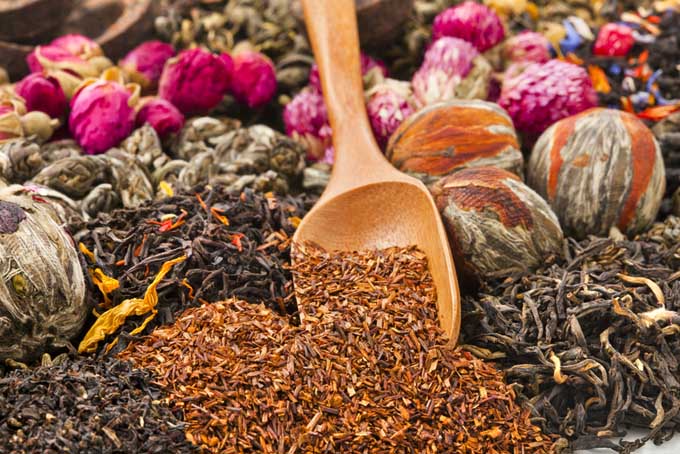
One of the things I love about tea is the huge variety available to choose from; there is seriously a type of tea to suit any taste.
On top of that, you also stand to gain from a phenomenal array of health benefits if you drink it regularly.
In case you’re not familiar with the many the types of tea there are or their myriad medicinal qualities, this is the guide for you.
Here, I’m going to break down the different varieties and list a few of the potential health benefits of each one. I hope you’ll find this helpful if you’re delving into the world of tea for the first time.
After you’ve finished with this, check out my teapot and equipment article to help hone your brewing techniques. And don’t forget that you need to store your tea correctly using the best storage containers in order to lock in the flavors.
An Introduction
All types of true tea come from the Camellia sinensis plant that is a shrub native to China and India. These include white, green, oolong, black, and pu-erh teas.
Teas made from other plants (herbal teas, African rooibos tea, and so on) are not true teas but should be considered tisanes – a catch-all for any beverage made from the infusion or decoction of herbs, spices, or other plant material in hot water, often for medicinal purposes.
I will cover all of the true teas as well as a few of the herbal varieties for you here.
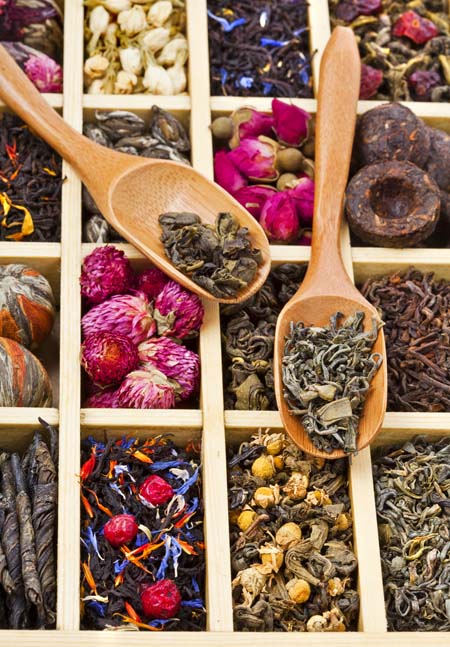
True teas have these awesome compounds called polyphenols which offer a multitude of health benefits. The polyphenol most strongly associated with cancer prevention is epigallocatechin-3-gallate, or EGCG, and this is present to some extent in all types of tea.
Besides the potential benefit of helping ward off cancer, polyphenols can also help to prevent heart disease, diabetes, promote weight loss by boosting metabolism, assist in lowering cholesterol, and increase mental alertness.
If the caffeine from coffee is what gets you going in the morning, tea has caffeine as well. But not as great a quantity as you will find in coffee, so you will get the wake-up you need without the jitters that can come from too much caffeine consumption.
White
White tea is the purest and least processed type. As a result, this variety has the highest level of polyphenols, and thus more potentially beneficial cancer-fighting properties than any other type available.
Light in color and flavor, this comes from only the youngest leaves and buds of the plant. These are first steamed, and then dried. This type of processing results in a drink that’s very low in caffeine.
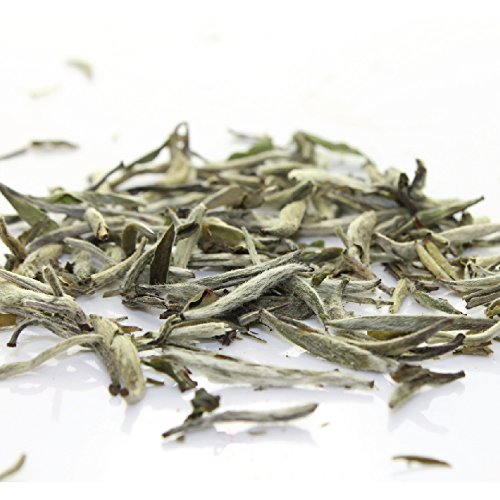
Organic White Silver Needle – Bai Hao Yinzhen By Tealux – 4 oz
One of the most popular varieties of white is Silver Needle, which is also on the pricier side.
These hand-picked buds are only harvested for two days out of every year, which is the reason for their higher price.
An interesting side note is that white tea was the preferred beverage of Chinese royalty dating back to the Tang dynasty, which ruled from 618-907 A.D. If you weren’t a part of the imperial family, it was against the law to consume this tea.
Fortunately, this isn’t the case any more!
I suggest starting with Tealux’s Organic White Silver Needle Tea (Bai Hao Yinzhen), pictured above.
Green
Even today, green tea is the drink of choice all throughout Asia. Minimally processed through steaming alone, green tea is also high is ECGC and other polyphenols, and its health benefits are the most widely studied among tea varieties.
The antioxidants found in green tea have been shown to inhibit the growth of bladder, breast, lung, stomach, pancreatic, and colorectal cancers.
It’s also been proven to help prevent the clogging of arteries, help burn fat, counteract the effects of stress, reduce the risk of both Alzheimer’s and Parkinson’s disease, and reduce the risk of stroke.
These are just a few of the amazing benefits of consuming this beverage on a regular basis.
Only two cups a day can give you some benefit, but most studies that have shown health benefits were based on consumption of 2-3 cups a day.
Not sure what to get? This Heavenly Tea Leaves Sampler, available from Amazon, gives you nine green varieties to try.
China and Japan both produce green tea in large amounts, using slightly different methods. In both countries, leaves are picked, dried, and then heat-treated to stop fermentation.
In China, the heat is applied via roasting, whereas in Japan the heating is done through steaming. This difference results in the Chinese tea being more of a yellow-green color with a slightly toasted flavor.
Tea from Japan is a darker green with a grassy flavor.
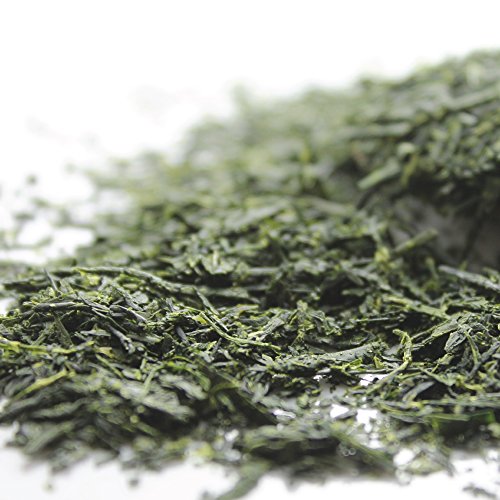
Premium 1st Flush Yame Gyokuro Japanese Green Tea – 3.5 oz
Interestingly, green tea also started out as a royal drink. But by the 1400s, everyone was drinking it, from the emperor all the way down to the lowliest villager.
Now, it’s consumed daily by billions of people worldwide. One of the most popular varieties today is Japanese Gyokuro. The plants for this are only grown in the shade, which boosts the chlorophyll content of the leaves and gives the tea a very unique taste.
Leaves from these plants are the same type used to make Matcha – the powder used in green tea ceremonies.
BESTLEAFTEA Spring Picked Organic LongJing/Dragon Well, available via Amazon
Dragonwell is the most popular type of Chinese green tea, and it was previously reserved strictly for the Chinese imperial family.
Read Foodal’s Complete Guide to Green Tea for more information on this style.
Oolong
If you’ve ever ordered hot tea in a Chinese restaurant, this is the kind you most likely were served. This is a full-bodied infusion with a sweet aroma, and it is very easy on the taste buds.
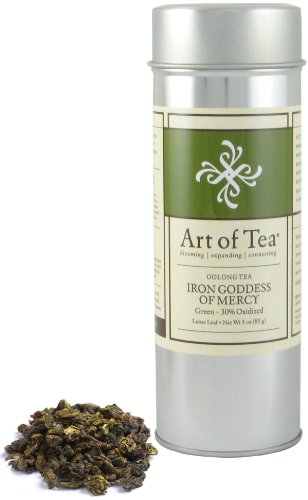
The Iron Goddess of Mercy Oolong By Art of Tea is a well-reviewed pick that’s worth trying.
The processing method for this type is a little more involved than with white or green. After the leaves are picked they are intentionally bruised, and then dried.
While the leaves are drying, the edges of the crushed leaves turn a reddish color and the centers a light yellow, due to oxidation.
After a brief fermentation period, the leaves are roasted in pans, creating a semi-fermented tea. As a result of the oxidation period, the final product is a reddish-brown.
Health benefits of oolong specifically include a proven reduction in chronic conditions such as heart disease, arthritis, and high cholesterol.
It’s also a commonly held belief in China that daily consumption of oolong results in lower body weight, as it boosts the metabolism.
Crystal Clarity Oolong, available from Plum Deluxe
It was named by the Buddhist monks who trained monkeys to climb to the tops of the plants to pick the leaves that the monks couldn’t reach. This is a premium oolong with a rich orchid-like aroma, and an especially smooth finish.
Black
The most processed of all the teas made from the Camellia sinensis plant, making black tea involves withering the leaves, then rolling them, a long period of fermentation, and then firing the leaves.
This results in a complex and full-bodied sweet extraction. It has the highest caffeine content, so it will give your nervous system a level of stimulation similar to drip coffee.
With lower polyphenol levels, you won’t get as many cancer-fighting properties from drinking this brew. But it is still chock-full of antioxidants, some of which have been shown to help protect the lungs from the damage caused by cigarette smoke. Drinking this type may still help to lower your risk of stroke as well.
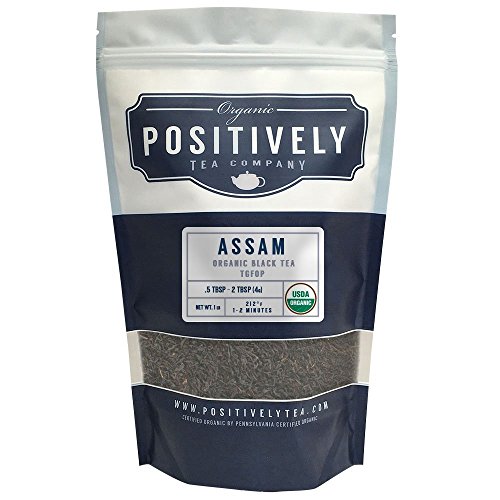
Foodal recommends Organic Assam Black by Positively Tea LLC.
Iced tea and southern sweet tea are both made with the black type. The most widely recognized varieties of pure black tea are Darjeeling and Ceylon, and then you have your famous black tea blends – Earl Grey and Irish Breakfast.
My own favorite, Lady Grey, is another popular black tea blend. It has an almost floral taste and is lighter than the traditional Earl Grey.
You can read more in my in-depth article on choosing the best black teas.
Pu-erh
I consider Pu-erh to be another form of black tea. The only difference here is that after the fermentation period, Pu-erh is then aged for prolonged periods, creating a greater depth of flavor.
Whereas black tea is sold as loose leaves, Pu-erh is pressed into patties or cakes, and they are even sometimes molded into various decorative shapes.
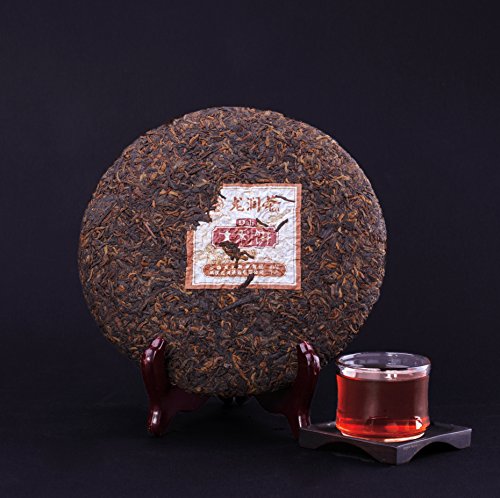
Yunnan Longrun Pu-erh Cake – Dali (Year 2010, Fermented, 357 g)
Pu-erh is often drunk to improve mental alertness, reduce high cholesterol, and especially as a weight loss aid. It contains chemical compounds that aid in the digestion of fatty foods, help to speed up metabolism, and lower cholesterol.
As a weight loss aid, it is said that if you drink a cup following each meal, it may prevent your body from storing any extra fat that isn’t digested.
Herbal
I have long been a fan of home and herbal remedies – honey for burns, peppermint and ginger for nausea, thyme for coughs, lavender for relaxation, and so on. Thus, it should come as no surprise that I love herbal teas for the countless different medicinal uses they provide.
Chamomile
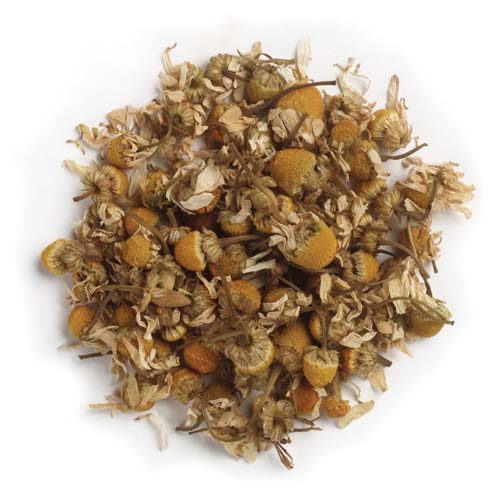
Frontier Chamomile Flowers, German Whole (double Cleaned), 16-Ounce Bag
Chamomile tea is one of the most popular herbal teas. Other than its most common use as a calming sleep aid chamomile also contains antioxidants that may help to prevent complications from diabetes, such as vision loss and nerve or kidney damage.
These antioxidants have also been shown to stunt the growth of cancer cells.
Valerian
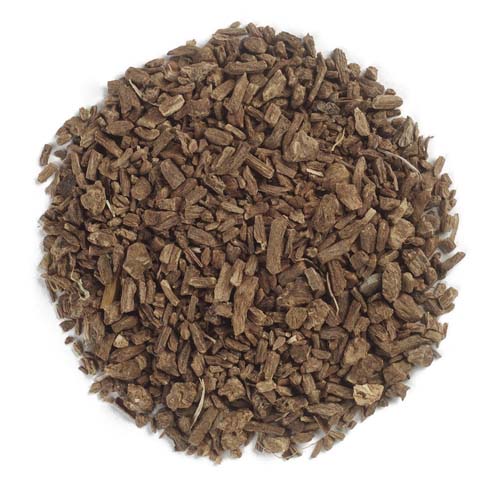
Frontier Cut & Sifted Valerian Root Certified Organic, 16-Ounce Bag
Valerian is another herb that is commonly used in teas as a sleep aid, often in combination with chamomile.
Rooibos
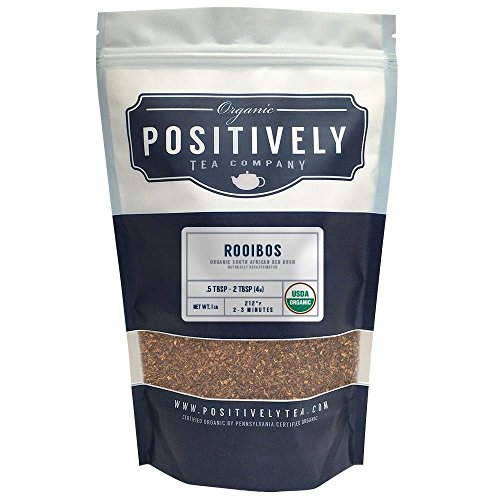
Organic South African Rooibos, Loose Leaf Bag, Positively Tea LLC. (1 lb.)
Made from the South African Red Bush, Rooibos (a.k.a. African Red Tea) is an herbal tea for which leaves are harvested from the plant, ground and bruised, fermented, and dried.
Rooibos is naturally caffeine free, sweet with a sometimes nutty flavor. Green rooibos is also available, made by skipping the fermentation period before drying. This type has a lighter taste.
Rooibos also contains polyphenols known for their cancer-fighting properties.
Others
Another common herb to infuse is peppermint, which is used for nausea, cough, sinus problems, and breathing issues.
Echinacea is frequently given as a decoction to help treat colds. Hibiscus tea is used to help lower blood pressure. And eleuthero is an Asian herb used for its calming properties as a drink before bed.
Mate
The last tea I want to talk with you about is made from the yerba mate plant, native to Argentina. While mate is also technically an herbal tea, I have so much to say regarding it that I wanted to give it its own section.
To make it, both the stems and leaves from the plant are harvested, blanched, dried, aged, and then cut. Some feel the taste is surprisingly similar to that of coffee and many times it is marketed specifically to attract coffee fans.
Organic Yerba Mate, Loose Leaf Bag, (1 LB.)
Early South American tribes considered mate the drink of the gods. It is ridiculously rich in antioxidants, possessing 90% more antioxidants than even green tea.
As if the potential immunity-boosting powers of mate weren’t enough, it has also been shown to help minimize the signs of aging, reduce stress, and even to help prevent certain cancers.
It is also highly touted for offering increased mental energy and clarity, and enhanced focus. This is largely due to the fact that it is high in caffeine.
Perhaps the best part of drinking mate is that it has chemical compounds and nutrients that may help to boost metabolism and help the body to use carbohydrates more efficiently.
For habitual mate drinkers, this means the potential for burning more calories and obtaining more useful energy out of the foods you eat.
It also has qualities that help to make you feel full sooner and may slow digestion to help you feel full longer, improving satiety. Furthermore, it has been known to work as an appetite suppressant.
Finally, this wonder tea has antioxidants and amino acids that may help fat and cholesterol to move through the bloodstream better, preventing them from accumulating on artery walls.
This helps to prevent hardening of arteries and the formation of blood clots that can cause heart attacks and strokes. Now, with a resume like this, who wouldn’t want to add a few mugs of mate to their diet? Available at Amazon.
To Sum It Up
Okay, I realize that this is a lot of information, but there are really so many different kinds of teas out there. I didn’t even get into the different flavors that complement each type of tea, such as lemon or orange with green tea…
Hopefully this has given you a place to start if you’re looking to begin drinking tea on a regular basis. Want to know more? Read all of Foodal’s Tea Guides and Reviews.
About Ashley Martell
Ashley has enjoyed creative writing since she was six years old, when she wrote her first short story. She majored in English literature at the University of Montevallo. After years of professional work, she is now a stay-at-home mom of three, who uses her craft to write about her life and adventures in and out of the kitchen.

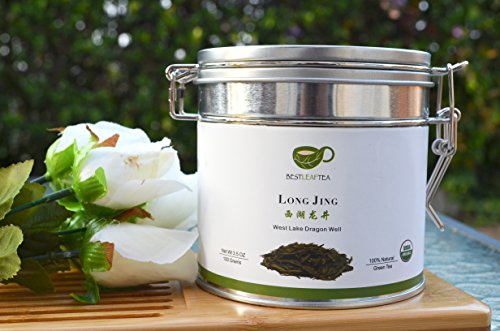
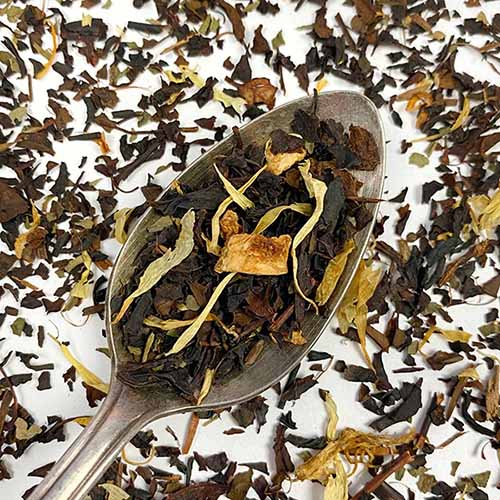

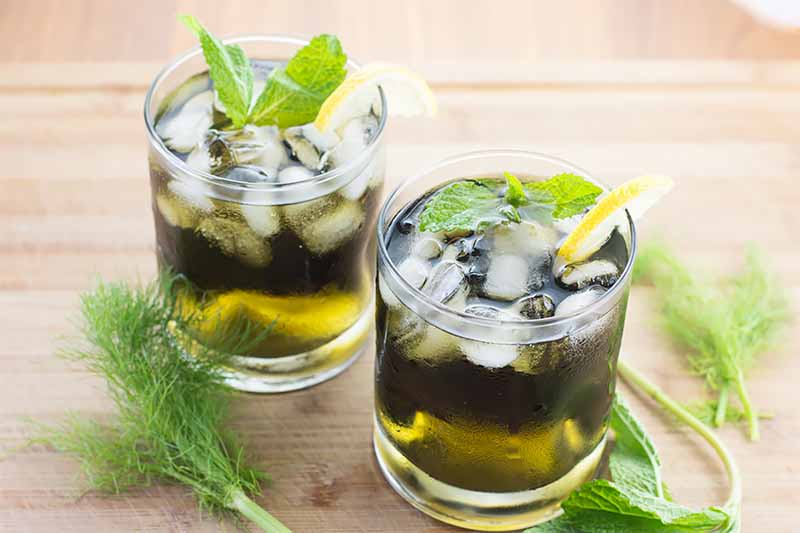
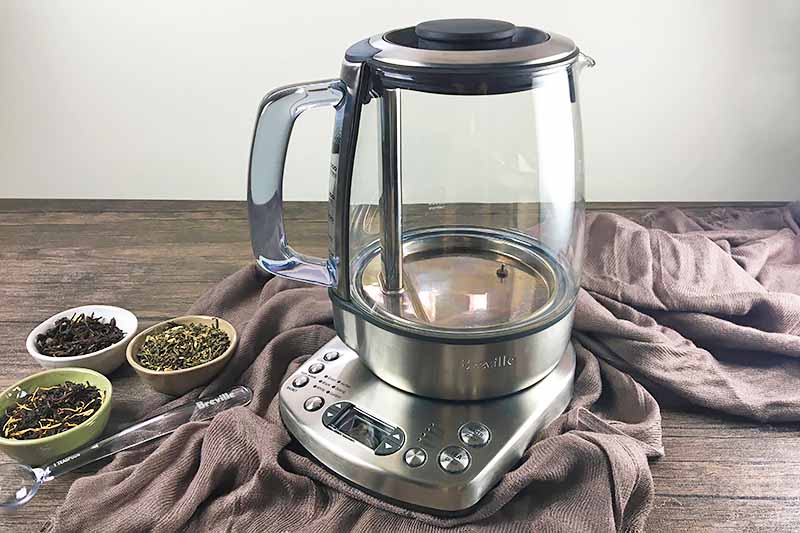
I hated tea before I went to Asia. In Hong Kong, it became sort of a necessity to get used to it… It was everywhere! You cleaned your dishes with tea, you ate with tea, you digested with tea. Ice tea had the full strong tea flavor rather than the sweet syrupy taste from home… It took me about two weeks of grimacing, but then I was sold. Tea was great, warming my belly and free and all. The tea that helped me switch over: something made with daisies or something similar.
I don’t often drink pure tea, though. I shop at David’s Tea and other tea shop and get these very fruity mixes. It’s like juice! But without the calories 😀
This is a great introduction. I’m a huge tea fan, mornings just don’t feel right without a steaming cup of the Bee’s Knees (my current favorite)! I just love all the variety and the traditions surrounding it. I primarily drink white, black, and herbal mixes (green tea reminds me of seaweed). I’d like to try out Pur’Eh but I haven’t made the jump yet. 🙂
All my Mom drank when I was growing up is tea. I loved to boil the kettle at night with her after my brothers have gone to bed and enjoy a nice cup of tea with her while looking for something to watch on the television. As I moved out on my own I started drinking coffee.. Now for some reason I cannot bring myself to drink a cup of tea. It makes me really sad as it is such a special thing I shared with my Mom, but I would love to be able to get back into it one day.. Thanks for your post, anything positive I can read about tea will be encouraging for me 🙂
Glad I could help!
This is an amazing amount of information, and just what I was looking for! Having just gotten into green tea – matcha in particular – I was hoping to find out some more about the health benefits of other teas such as white tea, which I’ve never tried before.
I find that just a single cup of green tea in the afternoon gives me a huge energy boost; I’m thinking of upping my intake to two cups a day to see what it can do for me. Also, I found the information on ‘Mate’ tea to be fascinating! I’ve never heard of this tea before, and I think I will be giving that a go very soon.
Although I’m an avid coffee drinker, tea will always play a huge part in my daily routine. In fact, one of my guilty pleasures lately is a mug of chai tea – all of those wonderfully sweet spices are so nice after a meal, and very good for counteracting nausea or an upset stomach.
Thank you for putting together such an informative article.
In regards to tea vs coffee in terms of energy and caffeine… I’m a huge coffee drinker as well and would say that I “need” a cup of coffee in the morning to consider myself functional. That being said, I feel that tea provides a much cleaner energy bump compared to the raw fuel that coffee seems to be.
Coffee will get me up in a viscious manner. Tea is much gentler and allows me to segue smoothly in to an energetic state, rather than just being spiked up on caffeine very quickly.
I’m so glad you enjoyed my article!
I am not new to herbal teas, but I still learned so much from your article. It is interesting to me how the various ways the teas are cultivated, affect their tastes and appearance. Green tea is one of my favorites, and I am surprised to hear there are so many types of green tea. This is my second time hearing of white tea and I liked being able to see the pictures and understand its true value. Most shocking is that Mate is even more potent than green tea. I wrote for a blog a few years back, and my job ended when my employer moved to South America; shortly thereafter, he was swearing by Yerba Mate and promoting it vigorously. Now I see why. Thanks so much for giving me a glimpse into “true” teas!
Mate is definitely worth giving a try. I’m so glad you enjoyed my article!
This article is really interesting to me. I’ve always considered myself a big tea lover and drinker, but I actually had never even heard of Mate tea, and now am very interested to try it. It never occurred to me that a tea might taste anything like coffee. I also learned a lot more about the difference between black tea and Pu-erh. I actually always assumed they were the same thing! Thanks for the educational article.
Great overview! I love tea. My favorite is a simple black tea like a breakfast blend, but I love herbals as well. Unfortunately, most of the herbal teas I like tend to be very expensive. Still it makes a nice treat. I’ll have to try lady grey. I hate earl grey because the bergamot in it tastes like soap to me.
Do you typically take your tea with anything or just straight? I find that the subtle hints can often be drowned out when you add any milk or sugar, which may offset or mask the taste of the bergamot in the Earl Grey enough that you’re able to take it.
A word of warning about yerba mate tea. Although they have great health benefits, if consumed in excess for prolonged periods, they actually increase your risk for certain cancers. So just like everything, consume in moderation. More of a good thing is not better in this case.
Thank you for that word of caution there missbee23, yet its quite contradictory in terms of its benefits, because if you think about it, it got extreme immunity boosting benefits and a load other benefits, that would make someone to go all out {drink as much…} yet when consumed for prolonged periods, you get drastic results…mind-boggling i must say.
I am more of a coffee drinker myself but sometimes I get in the mood for tea. My mom never bought any fancy teas growing up just Tetley and King Cole. Since living on my own I have tried Harney & Sons Pumpkin Spice Tea which was good but I had to be in the mood for it otherwise I found it to sweet. This was a good article, I enjoyed learning about the various teas.
I really enjoy tea, particularly, the black Assam and Darjeeling varieties. Tea is virtually the national drink here in the UK, the first thing any of us does in a crisis is put the kettle on! I have never heard of monkey-picked Oolong before now though, I love the idea of the monks and the monkeys working together!
Being raised by my grandmother, I grew up drinking tea. We always stuck to the basics – earl grey and red rose. After moving to a larger city, I discovered all of the different options and flavours of different types of tea. Going to David’s Tea the other day was a huge eye opener for me. I’m so excited to delve into this new world. Although red rose is still my current favourite, I’m loving looking for a new one.
Black tea is my personal favourite. I recently returned from a trip to Taiwan and was able to make a tour of a tea plantation and spend an afternoon with a teahouse owner. The intricacies and tradition that goes in to the entire process of tea is astoudning. From the cultivation to the harvest, from the drinkware to the drinking, the entire deal is absolutely steeped (hah!) with history.
There’s nothing better than learning about tea, over a cup of a tea.
Wealthy load of information right there, page has been bookmarked, its not too often that one gets to harvest golden information like that and to think that i had put my tea tin on the shelf and purposefully forgotten all about tea, time to plop in one tea bag in my cup right now and remind myself of its importance and wonderful benefits to my health 🙂
This is such a great guide for beginners. We have always been tea drinkers in my family. One of our favorites is chamomile. I drank it nearly daily when I was younger. I have expanded my horizons quite a bit since then. I’ve always wanted to try Mate. I’ve heard so much about. I think it’s Argentina’s national drink.
I definitely need to explore more into different types of tea. There are so many different choices that I’ve never heard of! My go-to is usually green, but I also enjoy chamomile before bedtime. I will definitely need to try Mate–I didn’t know one tea could have so many different benefits!
Great article! Thanks!
Thank you! This is a REALLY great article! You have included so much information for people who are new to or interested in tea, and even taught me (I’ve been drinking tea for thirty-something years) about a new tea! Though I’m not sure if I’ll like it =( I don’t like the taste of coffee at all =( I can even taste it in things like cake when it’s added to “enhance” the flavor. I will have to give mate a try.
The down side is, I live in rural Minnesota, and they don’t have any specialty shops or anything up here. Thank you for including a link I can use to buy it online and give it a try. I know even if I don’t like it, my mom will. She loves coffee and has been drinking tea forever. She’s the one who introduced me to it when I was 3 or 4. Instead of hot chocolate when I came in from playing outside, she gave me a nice hot cup of tea. I’ve been hooked ever since.
Tea has always been a mainstay in house as an alternative to traditional medicines. The herbs used to make native teas can help with simple ailments to the most severe burns.
During the summer I make a unique blend of apple cinnamon tea and black tea, it is so good I can not keep it in the refrigerator.
Not sure why, but I can’t drink a lot of tea. It makes me have an upset stomach. I drink coffee with no problem. So I’m thinking it’s the caffeine. My daughter swears by green tea. She drinks it all the time. It was very interesting to read up about tea through out history.
Karma,
It cant’ be the caffeine unless your drinking decaffeinated coffee. Coffee has about 3x the amount that tea has. Sometime even more (the lighter roast “breakfast” blends are probably closer 4x).
This was a great article, and I’m so glad I read it. As a girl raised in the south, I’ve been accustomed to drinking black tea most of my life. As I’ve gotten older I’ve added green tea and a few herbal teas. I had heard of some of the other teas with the exception of pu-erh. I definitely want to try it, along with roobios. It is so good to be reminded of the health benefits of different kinds of tea. I put a few of these teas on my Amazon wishlist so I can try them out for myself. Thanks for the information!
Some of these look so good! The Yerba mate is what I’m looking forward to the most. I rarely drink hot tea because it typically doesn’t have as much flavor as I like. These are definitely worth giving try, though. It may end up being exactly what I’ve been looking for!
I am a coffee drinker from childhood, but like the author, I sometimes remember that I love tea as well. There is something about drinking tea in my special mug that calms and comforts me. My favorite is probably Earl Gray, but I also like just plain old Constant Comment. One thing I didn’t know until recently, is that if I boil the water for green tea, it brings about that bitterness, that is so off-putting to me. Now that I know how to brew it, I can enjoy green tea as well. Thanks for such an interesting and comprehensive article.
I’m so glad I read this post because it’s a great introduction to tea. I have been looking for something to replace my morning coffee so I bought an English Breakfast blend. In the afternoon I drink a nice hot cup of green because I don’t want too much caffeine that late in the day. However, I don’t have a tea set so I’ll definitely buy one soon!
I have also been a habitual coffee dude. I have tea drinkers in the family and have a cup here and there myself.
I always feel so overwhelmed when I walk into the tea store to pick up a gift. I didn’t realize all real stuff is the same plant just different methods of processing!
Thank for the post, know I can go to get myself some good variety and try to reduce the coffee intake. That and my relatives will bet getting a good gift this xmas =).
What an informative article! I bookmarked it to come back to later. I love green tea, I drink at least a cup a day. I knew about some of the health benefits, but was surprised at how many I didn’t know about! Now I want to make sure I get in 2-3 cups every day! I’ll be referencing this article later, when it’s time to buy more. Maybe I’ll try something new this time!
I’ve been hearing a lot of hype around loose leaf tea recently, and seeing it referenced in your post brought it back to the front of my mind again.
With loose leaf Tea, I’ve heard you can get the full, rich taste of it. However, I’ve never been able to get over the sight and texture of the leaves that linger in the drink even after straining it. However, your post wanted me to give it a try, so I’ll see how it goes.
Otherwise, very informative article, well done!
Tea is so beneficial to my everyday life and I love it’s health benefits. Whenever I need a refreshing relaxing treat I always drink my favorite peppermint tea. I sometimes need an alternative to coffee because it can give a relaxing energy that I can’t achieve when I drink my coffee. I definitely alternate between coffee and tea. Teas does have so many nutritional values…green tea is such a staple in my household as well…it helps to alleviate belly fat.
Very informative article, it was interesting to read that the same plant can produce different degrees of caffeine just because of the different part of the plants and preparation used. I am too much of a traditionalist and can´t get away from black tea for my normal drinking, which has mostly replaced coffee because of the lower caffeine. I just do not enjoy the taste of green tea, especially the grass-tasting one from Japan.
Wow, I certainly didn’t know that all types of true tea come from the Camellia sinensis plant, and I’ve never really used chamomile for calming and as a sleep-aid…
I had to get up to boil the kettle halfway through this!
The most amazing thing to me is how well tea demonstrates the healing properties of plants. Just a few leaves, not even consumed but just steeped in water. In fact I often make my green tea by just leaving a jar with cold water and a bag to steep overnight as the cooler the water, the more polyphenols and other yummy things are retained. A relatively new tea on the scene is Hibiscus tea which apparently packs even more antioxidants than green tea too! Thanks for this really comprehensive article.